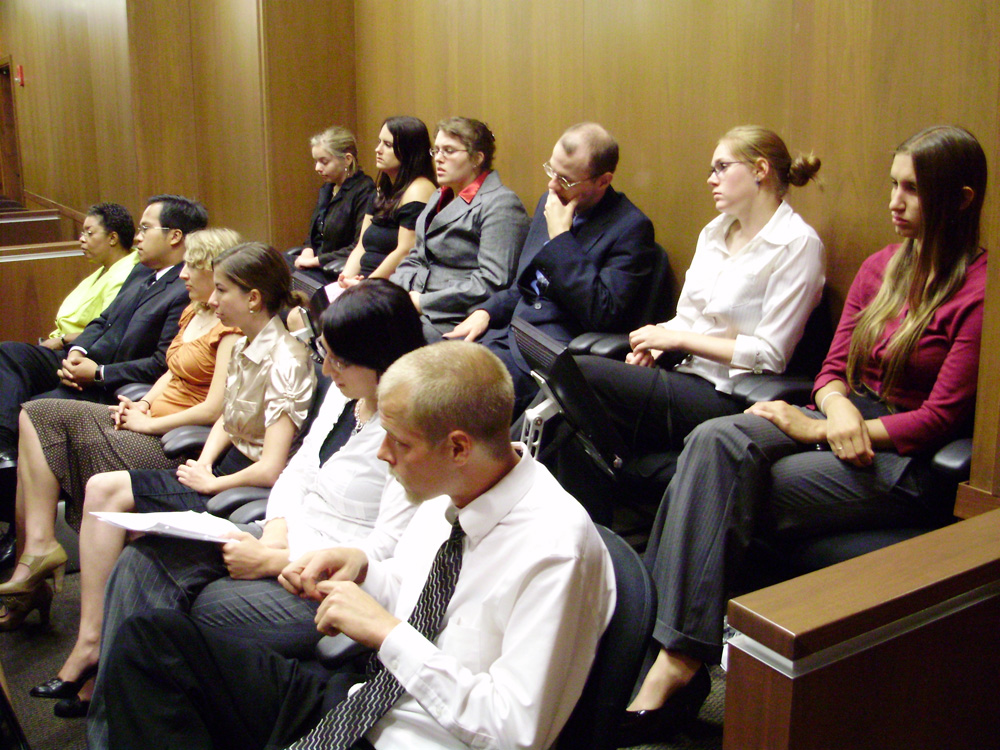When a cop pulls you over for speeding there are several things that are going through your mind at the time. You feel a little guilty of course, you are in disbelief that you were speeding or caught speeding, you are angry that the cop chose YOU over others to pull over, you are likely to also be a little upset about the ticket you may or may not be about to receive.
As the cop pulls you off to the side of the road, do the following: Turn off the engine, place the keys on the roof of your car, turn on the lights inside of your car, remove any hats, sunglasses, or any head wear. Make sure to place your hands on the steering wheel. By doing all of these things you are being completely submissive to the officer. You are also creating a comfortable and "safe" environment that the officer is not used to.
One approach to take is the polite one. Be respectful and kind to the officer at every turn. Cops have to deal with a lot of d-bags on a day-to-day basis. By acting unlike the rest, he or she may treat you differently as well. When the officer asks you any questions, answer responsibly. In other words, let them know that you know you are guilty. Acting as if you didn't do anything wrong, when the officer's job is to find people that do "wrong" things will likely offend the officer. In the polite approach, you do not want to spark any negative emotions in the officer.
Next week I will go over a few different approaches that you can take. See you next week for another post on Men in Blue.
Monday, November 26, 2012
Sunday, November 18, 2012
Sentencing
If the defendant is found guilty, he or she may be tried in the same jury trial in which the defendant was just convicted in. However, depending on the number of crimes the defendant is being tried for or the seriousness of those crimes, the judge may decide to appropriate another day for the sentencing of the defendant. Since the defendant is already convicted, he or she will be in jail until the day of sentencing.
 On the day of sentencing, the judge will determine the most applicable form of punishment according to the U.S. sentencing guideline. There are several other factors that play a role in the type of sentencing/ or length of sentencing. The defendants criminal background will be taken into account, his or her remorse for the crime committed, the victims' "pain" or the emotional/physical pain inflicted on the victims' family. The defendants personal background will also be noted, anything significant in the defendants' life will be seen.
On the day of sentencing, the judge will determine the most applicable form of punishment according to the U.S. sentencing guideline. There are several other factors that play a role in the type of sentencing/ or length of sentencing. The defendants criminal background will be taken into account, his or her remorse for the crime committed, the victims' "pain" or the emotional/physical pain inflicted on the victims' family. The defendants personal background will also be noted, anything significant in the defendants' life will be seen.
Once the judge determines the appropriate sentence, which could include several different courses of treatment depending on the factors listed above and the crime or crimes committed, he or she will enforce the sentence immediately. The defendant may be released on probation and ordered to do community service, or could be sentenced to prison for the rest of their life. No one case is the same, every sentence is applied to each situation accordingly.
Thanks for following my weekly blog on criminal court proceedings. Next week will start a completely new edition of Men in Blue. I hope you are as excited as I am. See you than.
 On the day of sentencing, the judge will determine the most applicable form of punishment according to the U.S. sentencing guideline. There are several other factors that play a role in the type of sentencing/ or length of sentencing. The defendants criminal background will be taken into account, his or her remorse for the crime committed, the victims' "pain" or the emotional/physical pain inflicted on the victims' family. The defendants personal background will also be noted, anything significant in the defendants' life will be seen.
On the day of sentencing, the judge will determine the most applicable form of punishment according to the U.S. sentencing guideline. There are several other factors that play a role in the type of sentencing/ or length of sentencing. The defendants criminal background will be taken into account, his or her remorse for the crime committed, the victims' "pain" or the emotional/physical pain inflicted on the victims' family. The defendants personal background will also be noted, anything significant in the defendants' life will be seen.Once the judge determines the appropriate sentence, which could include several different courses of treatment depending on the factors listed above and the crime or crimes committed, he or she will enforce the sentence immediately. The defendant may be released on probation and ordered to do community service, or could be sentenced to prison for the rest of their life. No one case is the same, every sentence is applied to each situation accordingly.
Thanks for following my weekly blog on criminal court proceedings. Next week will start a completely new edition of Men in Blue. I hope you are as excited as I am. See you than.
Sunday, November 11, 2012
Trial Part 2
After the prosecution makes its rebuttal. The judge will convey a set of instructions to the jury. Following this, the prosecution will make it's closing argument. In the closing argument the prosecution will re-present all of the evidence to the jury. They will try to prove why the defendant is guilty of the charges he or her are charged with. The defense than gets a chance show the the court why the defendant is not guilty. The defense will do exactly hat the prosecution did, but is rather trying to prove innocence than guilt.
 When the defense rests, the prosecution can follow with a rebuttal. Again getting another chance to poke holes through the defense's case. As the trial nears an end, the judge will give a final set of instructions to the jury before they deliberate. When the judge is finished, the jury will leave the courtroom in order to debate on the defendant's verdict. For a felony case, all the jurors have to agree on a verdict. However in some states, for lesser crimes, the vote may be a unanimous 10-2 or 9-3 decision.
When the defense rests, the prosecution can follow with a rebuttal. Again getting another chance to poke holes through the defense's case. As the trial nears an end, the judge will give a final set of instructions to the jury before they deliberate. When the judge is finished, the jury will leave the courtroom in order to debate on the defendant's verdict. For a felony case, all the jurors have to agree on a verdict. However in some states, for lesser crimes, the vote may be a unanimous 10-2 or 9-3 decision.
When the jury give its verdict, if guilty, the defense usually has post-trial motions. The post-trial motions consist of the defense asking the judge to acquit the defendant of the charges or to retry the case.
Next week i will go into details of the sentencing process. Thanks for stopping by!
 When the defense rests, the prosecution can follow with a rebuttal. Again getting another chance to poke holes through the defense's case. As the trial nears an end, the judge will give a final set of instructions to the jury before they deliberate. When the judge is finished, the jury will leave the courtroom in order to debate on the defendant's verdict. For a felony case, all the jurors have to agree on a verdict. However in some states, for lesser crimes, the vote may be a unanimous 10-2 or 9-3 decision.
When the defense rests, the prosecution can follow with a rebuttal. Again getting another chance to poke holes through the defense's case. As the trial nears an end, the judge will give a final set of instructions to the jury before they deliberate. When the judge is finished, the jury will leave the courtroom in order to debate on the defendant's verdict. For a felony case, all the jurors have to agree on a verdict. However in some states, for lesser crimes, the vote may be a unanimous 10-2 or 9-3 decision.When the jury give its verdict, if guilty, the defense usually has post-trial motions. The post-trial motions consist of the defense asking the judge to acquit the defendant of the charges or to retry the case.
Next week i will go into details of the sentencing process. Thanks for stopping by!
Subscribe to:
Posts (Atom)

